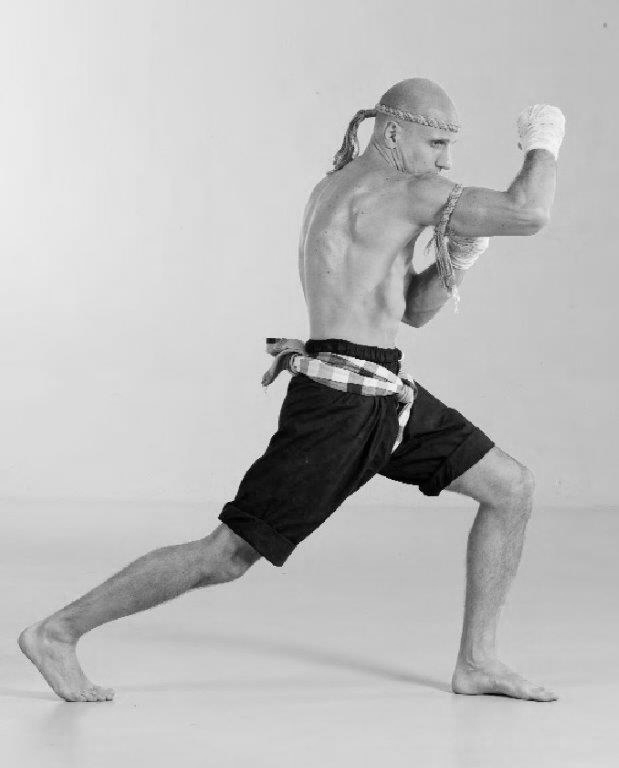
Nevertheless, after many years of oblivion, the practice of martial sequences employing Muay Boran’s attacks, defenses and counters, is thankfully making a comeback in Thailand as in the rest of the world and there are many practitioners who are returning to use traditional forms as training tools and carefully learn all the subtleties of this ancient fighting heritage. Speed, fluidity, balance, cardiovascular endurance, technical accuracy, coordination, flexibility and last but not least learning perfectly the traditional nomenclatures of each technique (redering each Form an unequalled reminder useful in itself and indispensable to be able to correctly transimit to others the various traditional Mai Muay according to their correct order), these are just some of the attributes developed with a correct practise of traditional shadow fighting.
Furthermore training Muay techniques aims at developing an harmonious relation among body parts. Today, as in the remote past, for Thai people top combat efficiency has to march in parallel with the fluidity and harmony of attack and defence moves employed, in a sort of mortal dance of combat or Ram Muay.
For this reason the practise of codified solo sequences which reproduce real fight situations, is held to be one of the best training systems to improve the development of efficiency and harmony in the coordination of body and mind.
Basically traditional Muay Forms are practised in two distinct ways: either in sequences for couples or single routines.
The second mode is rather similar to Karate Katas (and to many other martial arts patterns that follow a similar system) and aims to perform a series of offensive and defensive movements against an imaginary opponent, alternating slow and rapid movements.
In this case, the practitioner must strive to perform every action with utmost fluidity linking movements without interruption
By constant solo practise one really learns how to seamlessly combine offensive and defensive movements, strikes and parries, blocks and shifts, learning to bring to perfection each technique and at the same time improving the speed of the attacks and defences, improving dynamic balance and stamina. It has also been proved that profound concentration during solo practise can be compared to a real form of meditation in movement. This element characterises high-level martial exercise in all eastern disciplines of fighting. At the same time spelling the traditional name for each technique at the moment in which it is performed works as a mantra which greatly increases the efficiency of its implementation and makes every action really ‘magical’.

